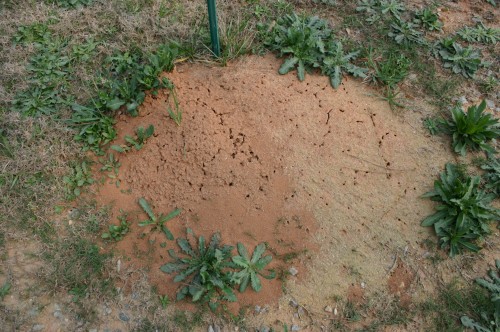





Q: Is there a safe and effective way to control fire ants in a vegetable garden? I’ve had strawberries in a raised bed but the fire ants took over. I was afraid of using chemicals for fear of contaminating the strawberries.
A: Managing fire ants in a vegetable garden is a challenge. One option would be to pour boiling water on the mounds on a warm morning when the pests are working in the top of the mound. Scalding water will kill an ant mound sixty percent of the time but take care not to cook your vegetable plants in the process.
Alternatively, if you work quickly, you could simply shovel the mound out of the garden.
Fire ant baits (click for sources) are effective but most can’t be used in gardens. I suspect that the reason the product is not labeled for use in a garden is not because it is unsafe. The manufacturer may have chosen not to incur the tremendous costs needed to prove its safe use on edible crops.
There is no prohibition, however, on scattering the bait around the perimeter of a garden and allowing foraging ants to take the bait granules back to their mound.
Baits have a very good environmental safety record but they act slowly. The mounds won’t disappear for several days.
ORGANIC CONTROL Spread a product containing the bacterial insecticide spinosad bait (click for sources). Then drench the mound with a product containing orange oil (click for sources)
or spinosad (click for sources)
.
Some (but not all) insecticides that contain permethrin, esfenvalerate or carbaryl are registered for use in gardens to eliminate soil insects.
Remember that fire ants are attracted to the conditions that make a good garden: soft soil, ample moisture, plus oil-containing seeds and seed pods. A combination of a bait and a mound treatment will suppress the ants for several months but they will eventually come back. A regular inspection for mounds and prompt control measures will keep your ant problems to a minimum.

Copyright © www.100flowers.win Botanic Garden All Rights Reserved